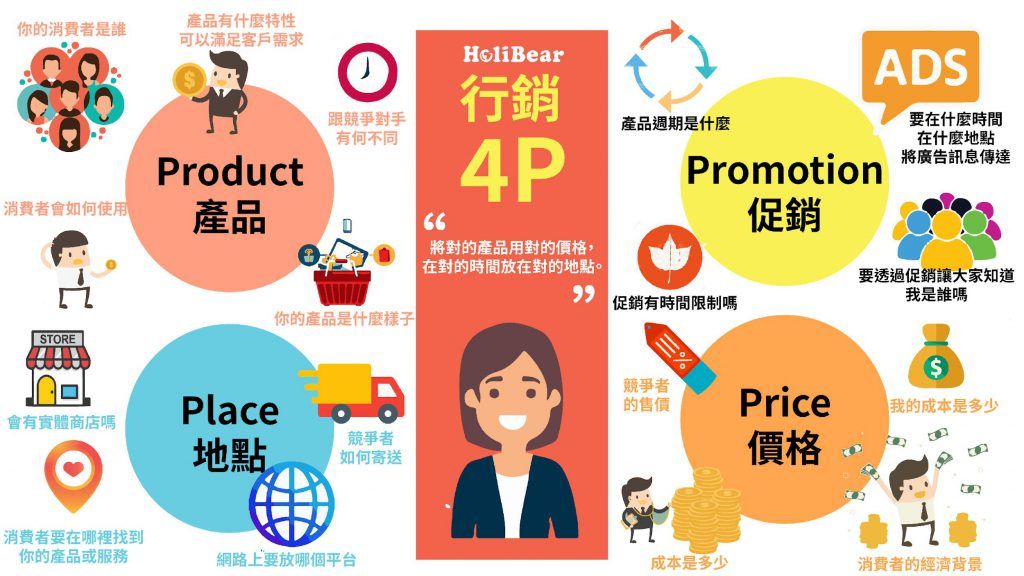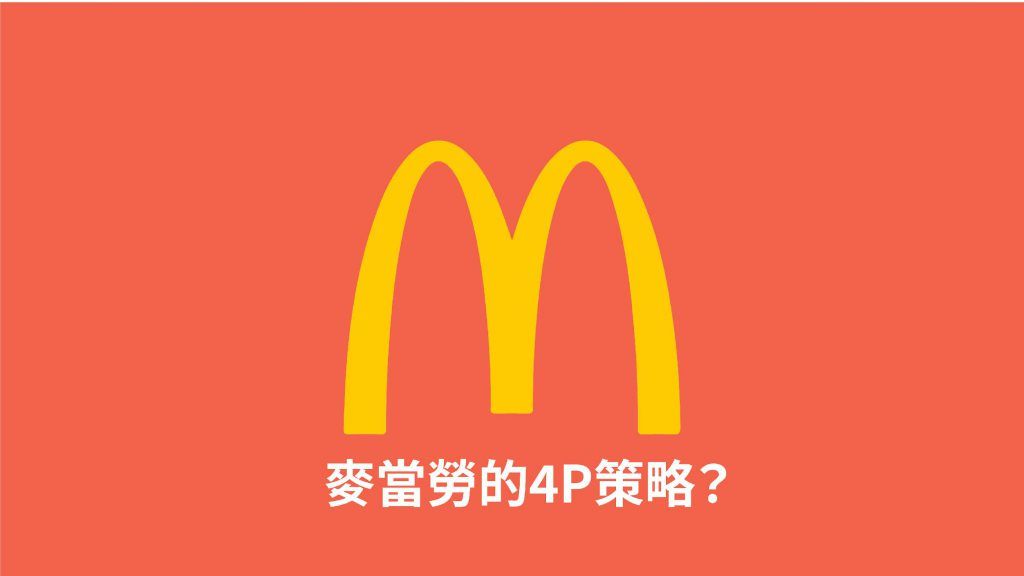What exactly are the 4Ps of Marketing? Understand the 4Ps of Marketing to define your marketing strategy framework
If you want to become a master of marketing, you must know what the 4Ps of marketing are! Now let Harry Bear tell you which 4P is 4P? Learn in simple terms how to actually apply them to formulate your marketing strategy!

The purpose of marketing is to "put the right product at the right price at the right place at the right time" . Although it sounds simple, a lot of research needs to be done behind this. If one element is wrong, the entire product line or positioning will collapse, resulting in heavy losses for the company.
What are the 4Ps of Marketing? In this era of big data, marketing is no longer about looking for a needle in a haystack, but about carrying out the most effective marketing strategy for the target market and concentrating resources on the most beneficial places.
The market has developed strategy modules for 7P and even 4C, but 4P is still a good starting point to help you plan new products or evaluate existing product lines.
Marketing 4P

Product
Products include tangible products or intangible services that address specific customer needs. You have to ask yourself these questions. All products have different product cycles, and as a marketer, you must understand the product cycle of your product, anticipate challenges and plan marketing strategies based on the different product cycle stages. You have to understand what kind of problem your product solves in the market and what its unique selling point is.
- Consumer side:
- Who are your consumers?
- What do consumers want from this product/service?
- What features does this product have to meet consumer needs?
- When, where and how will consumers use it?
- Product side:
- What does this product/service look like?
- What size, color, size should it be? What is its product name?
- Where is it different from the competition?
Price
The price includes the actual amount that the user expects to pay for the service or product. The pricing of a product will directly affect the sales method, and the price of a product is more related to the value of the product perceived by customers, rather than the objective cost. If the product price is higher or lower than the perceived value, some potential consumers may be lost. If the customer value is positive, then the price of the product is set higher than the objective cost. Conversely, if your product is not that valuable in the eyes of customers, it must be sold at a reduced price. Prices are also affected by distribution plans, value chain costs and competitor pricing.
- Consumer side:
- The economic background of the consumer?
- What is the value of this product/service to consumers?
- Are consumers price sensitive?
- What is the acceptable price range for consumers in this market?
- Product side:
- What is my cost?
- Will a small price cut allow me to carve up a bigger market?
- A small increase in household steps will be within the acceptable range of consumers, which will create more profits for me
- What are competitors selling for?
Promotion
Therefore, all marketing techniques are classified under the column of promotion. This may include advertising, promotions, discounts or PR. No matter which marketing channel you use, you have to make sure it's the right fit for your product, your audience, and the consumer market. You must also distinguish between "marketing" and "promotion".
- Consumer side:
- When and where is the best time to deliver your marketing message to your target market?
- In what way can you really reach your target group? (TV, radio, billboards, advertising, internet)
- Is this promotion seasonal or time limited?
- Product side:
- In what way to promote?
- What is the product life cycle like?
- How can I let everyone know who I am through this promotion?
- Do your competitors also do promotions?
- Does this have any effect on your promotional decisions?
Place
Location refers to the sales pipeline of a product and how it will be. Is it through storefronts, the Internet, hypermarkets...? The sales pipeline should also align with the overall marketing strategy.
- Consumer side:
- Where are consumers going to find your product/service?
- Where will most consumers be?
- If it is to be placed in the storefront, what kind of store is it? (Boutiques, supermarkets, mass retailers…)
- Which platform should it be placed on the Internet?
- Which delivery method do consumers prefer?
- Product side:
- How do competitors deliver their products/services?
- What can I learn from the competitor's model? How is it different from me?
- What shipping route do I need to choose to make it the easiest for consumers to receive it successfully?
Marketing 4P Example - McDonald's

McDonald's products
McDonald's products are mainly food and beverages. Product lines include:
- Hamburger
- chicken and fish
- salad
- catering
- drinks
- Desserts & Shakes
- Breakfast/All day breakfast
- McCafe
Among the 4Ps, "product" is the most important element of McDonald's brand and corporate image. McDonald's is famous for its hamburgers, but it has expanded its product line year by year. Now, McDonald's provides chicken, fish, desserts, breakfast and other more diversified foods to meet market demand, increase revenue, and diversify corporate risks. Diversified products increase new customer sources and increase the stability of the enterprise.
McDonald's Locations/How to Sell
McDonald's main sales methods are through:
- Dining room
- Hawker shop
- McDonald's mobile app
- Delivery mobile app
McDonald's main sales channels are McDonald's restaurants, and sometimes these restaurants also manage hawker shops, which sell specific products, such as sundaes or other desserts. Some hawker shops are temporary, such as hawker shops at sports games or other large events. Online apps allow target customers to see brand messages and order products more quickly.
McDonald's Promotion
The "promotion" element in the 4Ps defines the way a brand communicates with its target market. For example, a company holds an event to attract customers to buy a new product. Advertising is the most visible of all the methods McDonald's uses, including television, radio, newspapers, and online social media platforms. McDonald's also uses promotional coupons to drive traffic. At the same time, McDonald's will also hold charity events to enhance its brand image.
McDonald's price
The "price" element describes the price range of the company's food and beverages, and the brand will try to find a price that maximizes profitability and sales. McDonald's used
- Packaged Pricing: Package multiple foods into a package and entice customers to buy with a discount that's lower than the sum of the individual unit prices.
- Psychological pricing: McDonald's will use $xx9 to make the price seem "cheaper".
Like my work? Don't forget to support and clap, let me know that you are with me on the road of creation. Keep this enthusiasm together!

- Author
- More